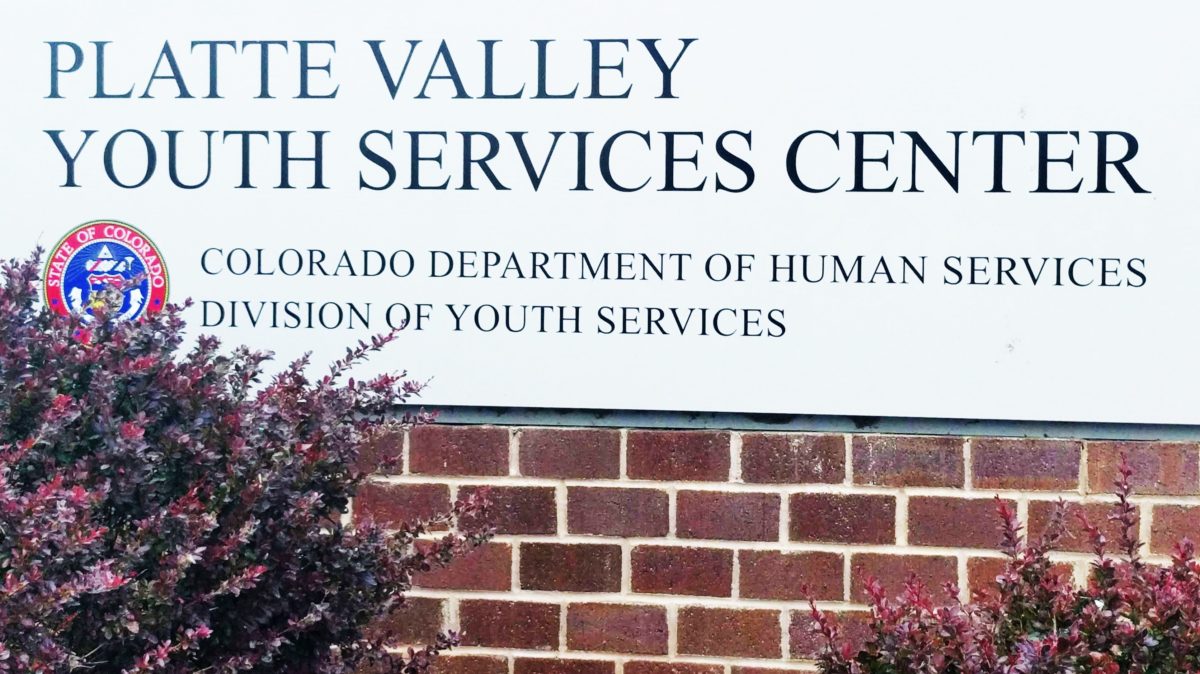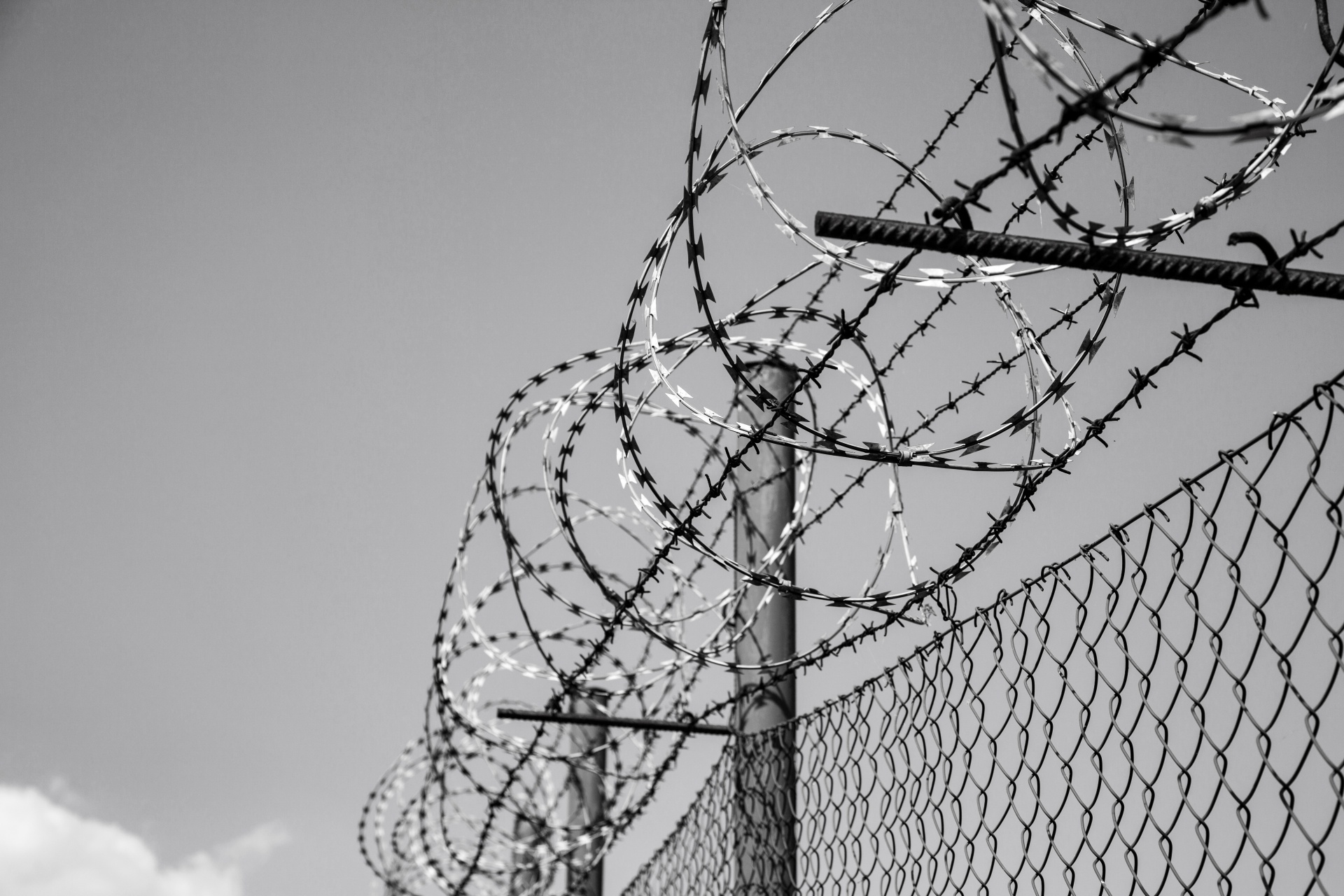This past December, my daughter filed an excessive use of force complaint against the Platte Valley Youth Services Center after she was taken down to the ground, handcuffed, carried to her room by six staff members, and then placed in a leg restraint and a helmet. Shortly after, my husband and I were rudely removed from the facility for inquiring about the incident and denied our regularly scheduled visit with her.
When Mallory was transferred to
Platte Valley after her previous facility was shut down due to unsafe
conditions, we had hoped she was being moved
to a safer environment. We had heard that Platte Valley ran a tighter ship.
Unfortunately, not only does Platte Valley have the same security issues and drug
problems as her previous facility (no one
bats an eye when the metal detectors are set off, and kids returning from
passes are smuggling drugs into the facility), it also has domineering staff
members who seem to get enjoyment out of exerting their authority over youth
and families alike.
My husband and I know better than
anyone else how stubborn and defiant our daughter can be. I am certainly not
disputing that. However, in the four years Mallory was in the custody of the Department of Human Services (DHS)
and DYS, she has never been considered “combative” or “aggressive” by staff
until recently at Platte Valley. In fact, we were always amazed by how
compliant she was with facility staff since she never followed the rules at
home.
Mallory was shuffled around a total
of eight different facilities, and she was always well-liked by staff. She consistently
earned various privilege levels for good behavior, including being able to work
in the kitchen. She was praised by the kitchen staff at multiple facilities
(most recently at Platte Valley) for being helpful and hard-working.
She never picked fights with anyone,
and a few months ago, when she was assaulted by one of the other girls on her
unit, she didn’t even fight back. The other girl was assaulting random girls,
hoping to “catch new charges” so she would be transferred to the Weld County
Jail next door (she was). At the time, Mallory was about to earn the behavior
level that would allow her to go on family passes, and she didn’t want to
jeopardize that by fighting back. I don’t think there are a lot of people who
could maintain such self-control in that situation.
And yet, during the incident which
was recently investigated by Weld County Human Services after Mallory filed a complaint with the Child Abuse Hotline,
she was so “combative” and “aggressive” with staff that she had to be
restrained by six staff members who took her down to the ground, handcuffed
her, and carried her to her room where they then placed her in a leg wrap and a
helmet.
Prior to this incident, Mallory had
lost the pass privileges she had worked so hard to earn (before even being able
to go on one) when she was written up by a staff member whom she insists made
up details about her cussing at him in an incident report. When she appealed
this decision to her unit supervisor, the unit supervisor responded, “It’s his
word against yours,” and denied her appeal.
The only thing Mallory values almost
as much as her freedom is fairness. When she feels she’s been treated unfairly
by someone, she shuts down and doesn’t cooperate. Or, as she once told us when
she was still living at home, she goes on strike. So, when staff told her she needed
to switch rooms because she was on privilege restriction due to the incident
report which she disputed, she refused. I understand how her stubbornness and
defiance warranted a restraint. However, I believe the use of force, as she
claims, was excessive.
According to the Weld County
caseworker who handled her investigation, the video footage outside Mallory’s
room shows that multiple staff members were in her room with her for 18 minutes
after they carried her into her room. They might have been able to diffuse the
situation simply by leaving her room and closing the door behind them, but
instead, they continued to hold her down for 18 minutes and added insult to
injury by putting her in a leg restraint and a helmet.
At our monthly team meeting at
Platte Valley, my husband and I began to ask questions about the helmet and leg
wrap that were used during the restraint in question. An assistant director who
was present at the meeting, supposedly to answer our questions about the
incident, insulted our intelligence by saying that Platte Valley did not have a
helmet. We then learned that Mallory had not been physically examined by
medical staff after either of two separate occasions during which she was
restrained, and injuries she received as a result of the restraints were also
never documented. In addition, staff did not notify us of the second restraint
that occurred later that evening, nor did they notify us when they placed
Mallory on suicide watch which they are required to do.
When we insisted that photographs be
taken of bruises Mallory had received on her face and arms during the
restraints and asked to see the helmet and leg wrap that were used, we were
suddenly denied our regularly scheduled visit with our daughter following the
meeting, and we were told to leave the facility. We informed the staff that we
were not leaving until photos were taken of Mallory’s bruises which were
already fading. Mallory’s therapist finally agreed to accompany her while
photos were taken and then return to the room to show us the photos. Mallory’s
client manager, who was curious about the helmet, left the room to try to
locate it, saying she would also come back to the room to let us know what it
looked like, since Platte Valley staff would not show it to us. When my husband
and I were alone in the room, and Mallory’s therapist and client manager were
both out of sight, Platte Valley staff came into the room and told us to leave
again. We explained to them that we were waiting for our daughter’s
professionals to return, but they didn’t care. They threatened to call law
enforcement if we didn’t leave. They probably would have put us in helmets and
leg restraints too, if they could have.
Ultimately, we left the room on our
own, upset that we were being treated like criminals for inquiring about our
child’s safety. Several staff members followed us out to the lobby, smirking as
though this situation was amusing to them. I was in tears, not only because of
the way we were treated, but because I had a personal understanding of what my
daughter went through on a daily basis, and it broke my heart. She complained
of staff constantly yelling at the youth, making them sit in silence for hours
at a time. The girls’ unit was never allowed to go outside (not even during
fire drills), and the kids were not allowed to have drinking cups or water
bottles when they were locked in their rooms at night. Mallory had an outside
art therapist who had brought her a sketch pad and colored pencils to use as a
coping mechanism, but her unit supervisor would not let her have them. The last
time I brought Mallory books, staff did not give them to her for several weeks,
even after she asked for them. This, I feel, was punishment for the excessive
use of force complaint as well as for our inquiring about it.
According to Mallory’s client
manager, who saw the helmet used in Mallory’s restraint and even tried it on,
its use is supposed to be phased out this month. So why was Platte Valley staff
still using it in December, and especially on someone who has no history of
aggression? When we spoke with the director of Platte Valley (who refused to
apologize for the way we were treated by her staff), she told us she followed
up with her assistant director whom she said had been misinformed about Platte
Valley not having a helmet, but she offered no other explanation.
Because we were not allowed to see
the helmet or leg wrap, I conducted an internet search for these items, at the
suggestion of Mallory’s therapist. The only images I found were far worse than
what I was picturing in my imagination and hopefully far worse than the actual
devices used at Platte Valley. But because of Platte Valley’s lack of
cooperation and transparency, these images from the
Yell County Juvenile Detention Center in Danville, Arkansas demonstrating the WRAP, are the ones that will stick with
me.
While Weld County Human Services was
investigating Mallory’s excessive use of force complaint, she was confining
herself to her room for most of the day because she didn’t trust the staff at
Platte Valley. Quite frankly, I didn’t trust them either. The director, in
particular, always evaded my questions, no matter how small, by citing some
facility policy, HIPAA law, or Colorado statute that didn’t apply. She tried to
convince me that I could not obtain the “physical response” report records from
DYS by citing Colorado Revised Statutes 19-1-304(8)(b)(V) and 19-1-305 which actually contradicted her claims and supported my
right as Mallory’s parent to access records related to a physical restraint or
use of force. The director either didn’t read or didn’t understand the statutes
herself, or maybe she thought I wouldn’t look them up or understand them. She
was obviously not familiar with my background,
nor did she know me very well.
I did obtain copies of the physical
response reports from DYS records in which the phrase “unsanctioned
technique” is repeated throughout multiple staff members’ accounts of the
incident. I also have copies of the photos that were taken of Mallory’s bruises
three days after the restraint. Conveniently for the staff involved, there are
no cameras in the youth rooms. This potentially allows staff to do whatever
they want to these kids while in their rooms, in this case, for 18 minutes.
There is no video evidence as to whether or not the helmet and leg restraint
were actually necessary. And as I have stated before, if there is no video
evidence, there are no consequences.
With the investigation now complete,
Weld County Human Services can only make recommendations as to how Platte
Valley could have handled this situation differently. I had a conversation with
the Weld County caseworker following his investigation, and after interviewing
youth and staff and reviewing video footage of the unit outside Mallory’s room,
these are his recommendations:
- Limit the number of staff members present while attempting verbal de-escalation techniques. The video showed roughly 25-30 staff members on the unit before Mallory was restrained (due to a shift change), which may have created a threatening environment, leading to the escalation of the situation
- At least one body camera should be worn by a supervisor involved in such incidents for transparency inside the youth rooms which have no video surveillance
Transparency is something that DYS
and DHS lack considerably. While the Weld County caseworker conducting this
investigation was initially sharing information about Mallory’s case with me
freely, he has been ignoring my requests for a copy of his report for several
weeks, as well as a request from Mallory herself. Hopefully he actually made
these recommendations to Platte Valley, and hopefully Platte Valley will take
them seriously. However, I question the legitimacy of this whole process which,
much like everything else within DYS, wreaks of concealment.





